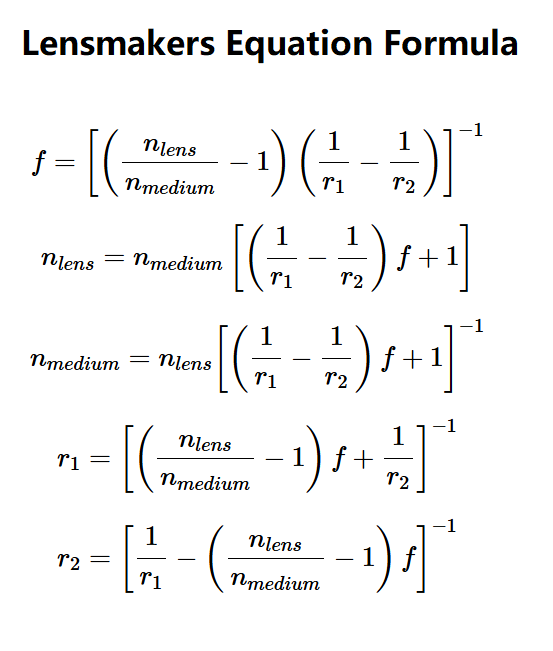 Home
Home
 Back
Back

Definition: The Lensmaker's Equation relates the focal length of a lens to its refractive index and the radii of curvature of its surfaces. It can be solved for different variables:
Variables:
Details: The Lensmaker's Equation is essential in optics for designing and analyzing lenses used in cameras, microscopes, telescopes, and eyeglasses.
Tips: Select the variable to calculate (defaults to Focal Length \( f \), which disables the \( f \) input). Enter the values for the other parameters with their units (meters for focal length and radii). The input field for the calculated variable will be disabled (grayed out). Click "Calculate" to get the result.
Q1: What is the Lensmaker's Equation?
A: The Lensmaker's Equation describes the relationship between a lens's focal length, refractive indices, and radii of curvature.
Q2: What is the refractive index?
A: The refractive index (\( n \)) is a dimensionless number that indicates how much light slows down and bends in a medium.
Q3: What are \( r_1 \) and \( r_2 \)?
A: \( r_1 \) is the radius of curvature of the lens surface nearest the light source, and \( r_2 \) is the radius farthest from it (both in meters).
Q4: Can I use different units?
A: Yes, the calculator supports meters (m), centimeters (cm), and millimeters (mm) for focal length and radii.
Q5: How accurate is this calculator?
A: The calculator is accurate based on the Lensmaker's Equation and input values, assuming ideal lens conditions. Real-world factors like aberrations may introduce variations.